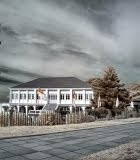
Improving our Landscape Images composition
The landscape photography can be difficult, but with good composition and good natural light can be made easier.
All the world's cameras, film and other photographic equipment are only tools for landscape photos. Cameras do not think for themselves. If we use a digital camera or film, photography same principles apply.
We did not comply with many rules to produce great landscape images, but they know that your images will be more fruitful. There are two striking features in the landscape photography: how to compose your image, and how to use natural light in a given situation.
Let's start with light: There are three basic qualities of light intensity, direction and color.
Intensity: refers to the strength of the light. When the sun high in the sky, the light can be hard and strong. The cloudy days bring soft light and inoffensive.
Direction: It is the placement of light. There are three categories of light placement: front, rear and side lighting. Side lighting produces more texture between light and shadow.
Color: The color of sunlight varies with the circumstances and time of day. When the sun shines at the beginning or end of day, color of light is much warmer and give rise to many dramatic scene.
Insight days will develop your ability to see. You begin to see the beauty of light in a different and exciting.
In landscape photography, it is very important to ensure the composition. A normal scene can be transformed into a close attention to detail. The composition is all about how you arrange the elements.
Here are some ideas you may find useful.
Head with the lines: To lead with the rules in most of the scene will draw your viewer into your image. These lines should not be immediate. Lines, including numbers, riverbanks or fences, can operate successfully.
Interest original: objects in the foreground simple can have your landscape a greater sense of depth. Use a small aperture (f/22) to keep the whole scene developed.
Natural settings: Frame your scene with the elements around you. This will highlight the most important part of the image. The trees make great natural settings.
These are just a few broad base, and combined with a good eye, you have everything you need to get the best of photography - especially landscape photography. These are just a few lines at the beginning, but like all rules, they are there to be broken.
No comments:
Post a Comment